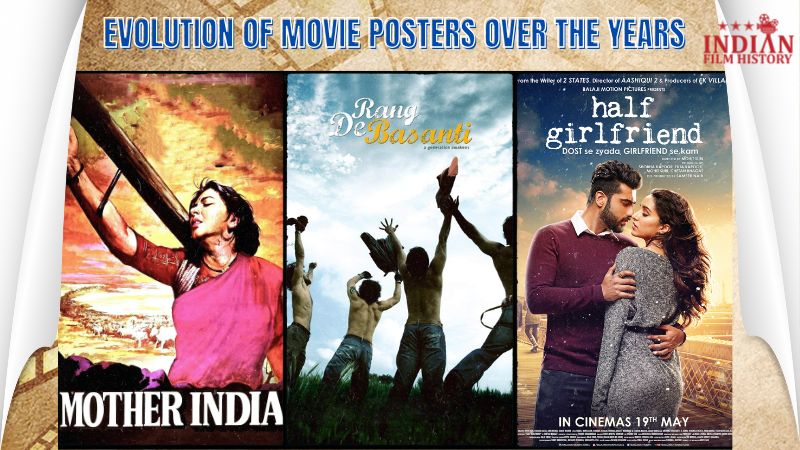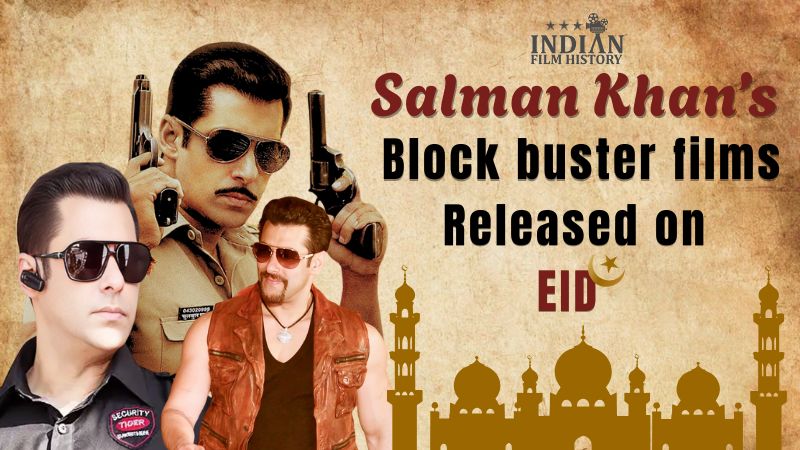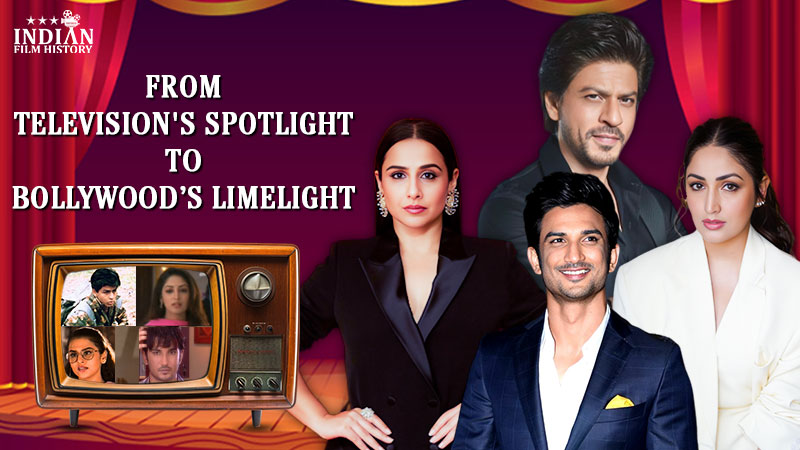Movie posters are more than just a promotional tool; they encapsulate the soul of a film and act as a bridge
between a cinema and its audience. Bollywood, with its
vibrant history, has seen the evolution of movie
posters from the initial times up to a modern era that
mirrors the artistry, cultural and
technological landscapes of India. There was a birth of Indian cinema in the early 20th
century, and gradually the movie posters turned
out to be creatively defining
what the film has, as
audiences can catch a glimpse
of it. Earlier handmade
paintings by artists
have really been fascinating, so the audience
gets excited to watch
their favourite films with their favourite actors
performing. Today, the posters
have been more evolved
and are showcased digitally using
digital software. It has evolved more creatively than it was before.
The Golden Age of Hand-Painted Posters(1940s-1960s):
Handmade painted posters got recognition in the early
1940s, became an iconic representation of cinematic storytelling. Those larger-than-life posters
crafted meticulously by talented artists
were a way to captivate audiences throughout the world. Posters had a
glimpse of dramatic themes blending with artistic finesse. We had artists like M R Aacharekar and Diwakar Karkare who were pioneers in this field, creatively defined
their work with the movie posters of Movies such as
Mother India
(1957) and Mughal-e-azam(1960). It showcased rich, hand-painted portraits of lead actors, with vibrant hues and
dramatic facial expressions capturing the essence of the stories.
The hand-painted aesthetics often relied on exaggerated
features and larger-than-life depictions of stars, which played into the grandeur and melodrama that Bollywood films were known for in this era.
The Rise of Offset Printing and Photographic Posters (1970s–1980s):
By the 1970s, hand-painted posters were replaced by
technological advancements of offset printing. This form of posters gained
popularity after the introduction of
photographic collages, which were
quicker to produce and resonated with the urban audiences.
Amitabh Bachchan‘s rise as an angry young man was
complicated by the bold and dynamic posters
of his blockbuster films. Movies such as
Deewaar (1975) and Sholay (1975) featured posters that combined
photography imagery with bold typography. These posters leaned heavily on action poses, weapons and dramatic
angles to emphasize themes of rebellion and heroism.
It was a Bollywood’s shift towards commercially driven storytelling. This period
also marked the advent
of mass marketing, with posters plastered across towns and cities to lure
moviegoers.
The Glamorous Era of the 1990s:
The 1990s ushered in a new wave of Bollywood cinema, driven by
romance, family values and global influences. With a shift came a more stylish, glossy
form of movie
posters. Films like Dilwale Dulhaniya Le Jayenge
(1995) and Hum
Aapke Hain Kaun(1994) epitomised this trend.
Posters featured soft focus photography, pastel tones
and romantic poses that appealed to the burgeoning middle class. The use of digital
technologies for editing
and designing posters
has become more prevalent,
allowing for a sleeker look.
Typography has also evolved through this era, with
film titles appearing in the most stylish fonts to match the themes of the
movies. The posters were not just about the lead actors, but also reflected the
setting, mood and emotions of the film, signaling a departure from the bombastic
postures of the past films.
The Digital Revolution (2000s–Present):
The turn of the millennium brought about a seismic shift in the way
movie posters were conceptualized
and executed. Advanced digital tools allowed for unprecedented levels of
creativity and precision. Designers began to navigate more with themes, layouts
and visual storytelling in ways that were previously unimaginable.
Movies like Lagaan (2001) and Rang De Basanti (2006) showcased minimalist yet impactful
poster designs. These posters
used symbolism and subtle imagery
to convey the essence of the films,
moving away from the star-centric approach of the earlier decades.
Superhero and action films like Dhoom (2006) and Krrish (2006) embraced high octane visuals, leveraging computer-generated imagery(CGI) to
create futuristic designs. The digital era also brought about the rise of character
posters, motion posters and teaser posters, creating multiple touchpoints to engage audiences. Social media platforms further
amplified the reach and impact of movie posters, transforming them into viral marketing tools.
The Return of Artistic Expression: A Nostalgic Trend
Despite the dominance of digital designs,
recent years have seen a resurgence of artistic expression in Bollywood posters. Films like Barfi (2011) and Half
Girlfriend (2017) embraced illustrative and unconventional designs, paying
homage to the hand-painted aesthetics.
These posters often incorporate abstract elements,
creative typography, and muted color palettes, signaling a shift towards
more artistic and narrative-driven approaches. This trend reflects
Bollywood's growing emphasis on content-driven cinema, where the story
takes precedence over star power.
The evolution of Bollywood movie posters also mirrors the sociopolitical and cultural changes in India. Patriotism and National Identity: Posters of films like Border(1997) and URI(2019) emphasize national pride with strong imagery of soldiers and the tricolor flag.
Representation of Women:
Early posters
often portrayed women in
submissive and ornamental roles. However, modern films
like Queen and Chakde India showcased empowered female
protagonists, reflecting changing gender dynamics of society.
Global Influences:
With Bollywood's increasing global footprint, posters
now incorporate design
sensibilities that appeal to international audiences,
blending Indian themes with universal aesthetics.
Conclusion
The journey of Bollywood movie posters is a testament
to the ever-evolving relationship between
art, technology, and culture. From the hand-painted masterpieces of
yesteryears to the sleek digital designs of today, these posters
not only promote
films but also encapsulate the zeitgeist of their times.
As Bollywood continues to innovate and redefine its cinematic language, its movie posters will remain a vibrant canvas, reflecting the dreams, aspirations, and stories of a nation.










